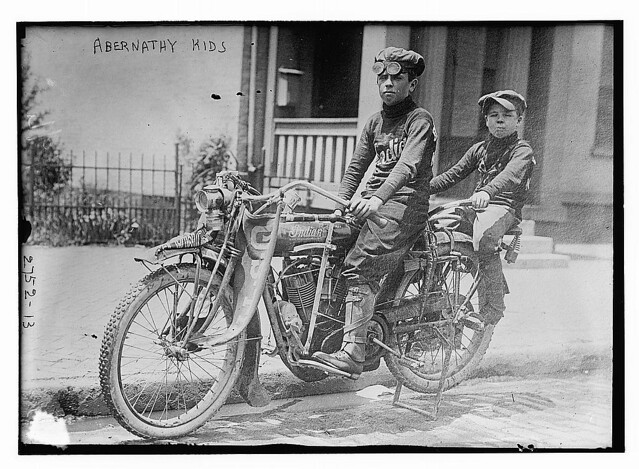In the days before Decepticons and Autobots, Viopticons, Stereopticons, and the other members of the Magic Lantern family thrilled audiences in darkened rooms. While perhaps difficult for us to imagine from our movie-savy perspective, for many years before the advent of cinema people went out to the “picture show” to look at slides. Theatergoers were captivated by the magical effect of these projected images. Eventually, enterprising showmen added musicians and sound effects to enhance the show–even animating the images by various mechanical techniques. During the late 18th and 19th centuries, phantasmagoria shows left audiences shivering with terror for fear that ghosts and demons had been set upon them.
The Texas Collection recently uncovered two boxes of glass slides manufactured by the Victor Animatograph Co. of Davenport, Iowa. These slides were 2 x 2.25 inches and were shown on the Viopticon, the first truly portable stereopticon. The Vioptican projected images using a brilliant carbon arc lamp. Sets of Viopticon slides were available for purchase or rent as illustrated lectures. Our two sets of slides were used by Baylor history professor Francis Gevrier Guittard in the early 1900s. One set contains hand-tinted photographs of Yellowstone National Park, and the other set depicts important events from the life of George Washington during the American Revolution. While these slides were not part of a spectacular Magic Lantern theater experience, they represent an early example of educational technology as manufacturers began to promote the use of projectors in the classroom.
The inventor of the Viopticon, Alexander Victor, lived a fascinating life. Born in Sweden in 1878, his first career was as a magician and showman working with the renowned Stephanio. Victor had obtained an early Lumiere Cinematograph and added projected pictures to Stephanio’s show, much to audience delight. After Stephanio’s death, Victor continued touring with his own troupe, but a warehouse fire in Ohio destroyed his entire collection of magical props and his career as a performer ended.
Despite this setback, the astonishingly creative Victor began again, and went on to invent the first electric washing machine for the White Lily Company. In keeping with his interest in projected images, and recognizing that there could be a larger market for motion pictures than as entertainment, Victor next invented what may be the first amateur 16mm movie camera and projector. In 1915, realizing that the danger created from highly flammable nitrate film stock would limit market growth in schools, businesses, and churches, Victor began pushing the film industry to adopt new safety standards and move to cellulose acetate “safety film.”
You can see a slideshow of these Viopticon images and imagine yourself in an early 20th century classroom by visiting our flickr page. For the Yellowstone slides click here, and for George Washington, click here.
















